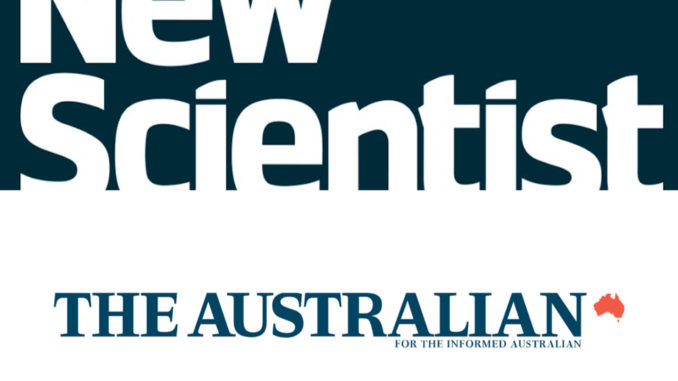
- New Scientist online news:
The New Scientistmagazine was found by Tom Margerison, Max Raison and Nicolas Harrison in 1965. The original idea of the magazine was to point out the importance of the future science and technology in Britain (Nigel Calder, 2006). As one of the world’s top popular technology and science magazine, the New Scientistmagazine has covered audience through their website, social media, app and print editions. Today, it mainly discovers the latest scientific research and encourages readers to be curious for human life, future technology, and universe (About us, New Scientist).
As the New Scientistmagazine has described, the target audience are intelligent, highly educated and affordable for their interests in technology and science (New Scientist Media Centre, 2014). Meanwhile, the latest analysis report from Alexa.com shows that almost all types of audience are interested in the newscientist.com in the fields of gender, education, browsing location, age, income and has children. There are rarely differences in education, browsing location, age, and has children. People who are highly educated, spending more time in home and school, above 55 years old, and without children are more likely to be the target audience of newscientist.com (Alexa, 2019).
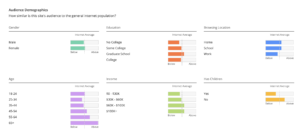
NewScientist: Landmark HIV case may be the second person ever to be ‘cured’
The masthead is eye-catching and accurate because it uses ‘Landmark’ and ‘second’ to draw readers’ attention. Meanwhile, it uses ‘may be’ and ‘cured’ in the single quotation marks to show that the uncertainty of this story in the future.
The news story meets the ‘Brevity’ – the first BASIC principle which is mentioned by Paul Bradshaw in Journalism Handbook. In the book, he states that journalist should write in brevity and the top-performing posts should be written in more time. Therefore, the news story can be suited in the mobile-reading world (Paul Bradshaw, 2017). The journalist writes the summary of the latest story in short and briefly mentions the process of bone marrow transplant and the previous similar case – Berlin patient. After interviewing the attending doctor Ravindra Gupta to gain the information of the London patient, the journalist also asks the opinion for balance from another researcher Jonathan Weber who expresses the uncertainty of the treatment. Finally, the journalist gives readers further related information about the HIV treatment.
The news story has accuracy in data and the source of information. The journalist uses the data, such as 50 percent risk of death and 10 to 20 per cent risk, which are accurately describing the risk of the HIV treatment that Berlin patient and London patient have faced. The journalist made a research of the backgrounds of interviewees, such as their positions and roles in the treatment.
In all, the text of the news story owns the characteristics of brevity, balance and accuracy.
Hypertextual, Multimedial and Interactive
The journalist well-links many sources to the 5 keywords, such as Berlin patient, 50 per cent risk of death, bone marrow transplant, CCR5 mutation and babies who will be resistant to catching HIV. Although giving readers the backgrounds and other related information, the hyperlinks can only open in the same pages. Readers may leave the original page so that they will not finish the news story. The other issue may be improved is that the journalist can consider moving some of the hyperlinks in the beginning and middle of the text. Therefore, the hyperlinks will not be crowded in the end of the story.

Tags are including ‘cancer’ and ‘HIV and AIDS’, which is not enough in quantity and hot topics. Berlin patient is the first ‘cured’ case in the world, so add ‘Berlin patient’ may increase the click-throughs.
The news story is not rich in multimedial. It only concludes a feature image and one image of Ravindra Gupta who is the attending doctor of London patient. No videos and audios making this news story less interesting and immersive for common readers.
As for the interactivity, the website is highly interactive in sharing through the different ways. The news story can be shared in 148 social media platforms and readers can customise the websites which they want to share with.
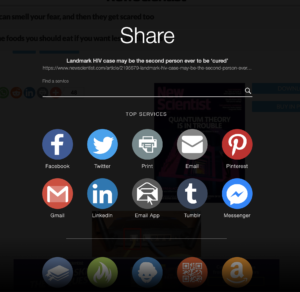
At the top of the banner and the bottom of the story, readers can see the buttons ‘subscribe and save 50%’ and ‘download/buy in print’ respectively. In order to keep the readers’ royalty, the subscription buttons encourage readers to be the members. However, there are no comments section, which means readers cannot exchange the ideas with the website and reporters. Website is disabled to collect the opinions from readers in time.
Functionality and Accessibility
The page is highly functional. Links can be opened, and images has captions and original sources. Any users can read the news and open the links.
The text, images and white space are well-organized and clean. The menu bar is divided into two sections — news and information, which is clear for readers to read.

- The Australian online news:
The Australian was founded since 14 July 1964. As a national daily newspaper, The Australian owns the most trusted news source in Australia, and it focuses on bringing the fully and accurately informed news to audience. It is running through the print (The Australian or The Weekend Australian), digital (theaustralian.com.au), mobile (The Australian) and app editions (Brands, News Corp Australia). This newspaper belongs to News Corp Australia which is the largest media company in Australia. Above 16 million Australians consume news and information through digital and printed readings every month from News Corp Australia. The media company define itself as different, principled, breakthrough, effective, and united (We are News, News Corp Australia).
Although, The Australian website broadly reaches the large portion of Australians, there are still some difference among gender, education, browsing location, age, income level and children conditions. According to the latest analysis in Alexa.com, the number of female readers is more than male readers. People who is learning or gaining the highly graduated level are more willing to have information from theaustralian.com. Varied from newscientist.com, theaustralian.com attracts working audience reading news from their website. Target audience also has the characteristics that above age 45, higher affordability and without children.
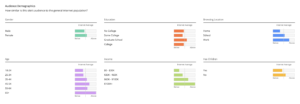
The Australian: Cell Success Gives Hope on AIDS
The masthead uses mild sense to describe the news; however, compared with the words (landmark, second and ‘cure’) used by New Scientist, this one is less eye-catching and inaccurate. Different from the structure of news story in New Scientist, the journalist Jamie Walker in The Australian writes a little bit more in the process of finding bone marrow stem cells and curing for London patient at the beginning. Jamie uses more opinions from varied fields, such as the attending doctor Ravinda Gupta, the director of Melbourne’s Peter Doherty Institute Sharon Lewin, Cipriano Martinez. Different opinions make the content more balanced.
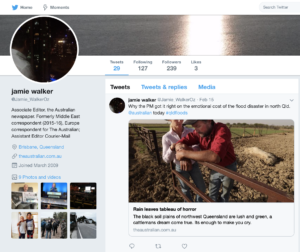
In addition, Jamie shows the several numbers to increase the accuracy and reliability, such as ‘19 months’, ‘10 years’, ‘27,000 Australian’ and ‘35 million people’. Jamie also makes a deep research in the positions of interviewees and Berlin patient.
Hypertextual
The only one hyperlink for the journalist. When click the link, it opens in a new page and shows the Twitter page of Jamie Walker. Readers can track other news which he posted on Twitter and his biography. Readers don’t have to worry about spending time in finding the news page.
According to The Online Journalism Handbook, hyperlinks can enable the news story link to other sources (Paul Bradshaw, 2017). There is no hyperlink in the whole story. The journalist should consider adding 1) hyperlink (https://www.hiv.gov/hiv-basics/staying-in-hiv-care/hiv-treatment/hiv-treatment-overview) on ‘antiretroviral (ART) drugs’ to announce the definition of this drug, because ART is unfamiliar to the common readers; 2) hyperlink (https://en.wikipedia.org/wiki/Berlin_Patient) on ‘Berlin Patient’ to notify the background of the previous case; 3) hyperlink (https://www.who.int/gho/hiv/en/) on ‘35 million people’ to indicate the source of the data in order to increase the liability of data.
Multimedial and Interactive
The journalist inserts no image instead of a feature image of a smiling face of ‘Berlin Patient’. The caption of the feature picture shows a little background of ‘Berlin Patient’. No video or images which makes the body text less attractive.
Readers can only use Facebook, Twitter and email to share the news. Compared to the news in New Scientist, the number of cooperative social media platforms is quite low. The website sets no comment space or ‘like’ button. A subscription banner is on the right side of the news story and it moves down when readers scroll down the page. In conclusion, The Australian website has lower multimedia and interactivity than that of New Scientist.
Functionality and Accessibility
Users can read the news once they pay the subscription, so The Australian website is only accessible to their members. Members can open the links in another page.
The interface is clean and has well-organized white space. As we can see, only one advertisement appears onside.
Reference:
- About New Scientist magazine. Retrieved from https://www.newscientist.com/about/
- Bradshaw, P., & Rohumaa, L. (2017). Writing for the Web. In The Online Journalism Handbook: Skills to Survive and Thrive in the Digital Age(2nd ed., pp. 72-98). Routledge. doi:978-1-315-76142-8
- Calder, N. (2006, November 16). How New Scientist got started. Retrieved from https://www.newscientist.com/article/dn10574-how-new-scientist-got-started/
- HIV/AIDS. (2018, August 29). Retrieved from https://www.who.int/gho/hiv/en/
- Media Centre. (2014). Retrieved from http://mediacentre.newscientist.com/audience-and-brand
- The Australian. Retrieved from https://www.newscorpaustralia.com/brand/australian/
- Walker, J. (2019, March 6). Cell success gives hope on AIDS. Retrieved from https://beta.theaustralian.com.au/cell-success-gives-hope-on-aids/news-story/e128f7ae35d9ef1ada7453057875c7a4
- We are News. Retrieved from https://www.newscorpaustralia.com/about-news/about/we-are-news/
- Wilson, C. (2019, March 5). Landmark HIV case may be the second person ever to be ‘cured’. Retrieved from https://www.newscientist.com/article/2195679-landmark-hiv-case-may-be-the-second-person-ever-to-be-cured/

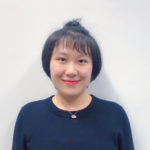

Ranyang you have posted your full comparison instead of the 200 word blog post required as the first task in assignment 1, so I will just comment on a few factors relating to one story. I agree with your proposal that links should open in new tabs – and so should yours. The links could also be shorter and should include better key words such as HIV cure. I very much liked the articles doi reference to its original source, and wish more news stories would use this system. I would have liked a link to the reporter’s biography and image, as well as to details about Ravindra Gupta at the University of Cambridge – instead all the links are to existing New Scientist articles.
Please properly title caption and attribute your feature image, with an alt text label. Keyword tags are used for external story discovery, so I have removed the ones dealing with analysis and left the relevant Google search terms. You could also add AIDs. Don’t forget to use your precede (subheading field below post) to promote your post.